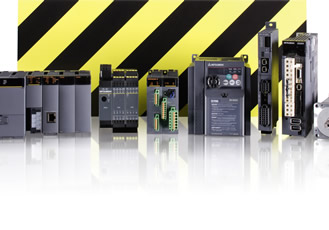Dedicated motion networks - a role or not a role?

The ever-growing requirement of open communications in combination with industrial Ethernet offering speeds high enough for even demanding deterministic motion control applications, it leaves us with the question- is there still a role for dedicated motion networks? Mitsubishi Electric’s Product Manager Barry Weller argues that there is…
We are now seeing a lot of manufacturing convergence, where integration between the plant floor and the wider enterprise is increasing and open communications from machine to machine and device to device is commonplace.
Indeed, with the latest standards offering Gigabit speeds and deterministic response, it may seem there is nothing that Ethernet can’t do. However, that doesn’t necessarily make it the only choice in every application, combining Ethernet and a dedicated network technology can offer the best of both worlds; speed of installation, operational performance and plant-wide connectivity.
Clearly, at the edge of the automation network, where basic command functionality is all that is needed, a simple bit-bus is still the most cost-effective solution. However, what about in other high performance network applications, such as motion control, is this still the case?
On paper, many industrial Ethernet versions have the capability to provide a communications backbone in motion control and axis synchronisation applications. However, are baseline figures always indicative of real world performance? Not necessarily, it is important to consider the operating environment as well.
In a heavy manufacturing application where there are welding robots and high power motors for example, there is a lot of high-speed motion activity, but also a lot of potential electromagnetic interference and electrical noise. Since industrial Ethernet at machine and plant floor level is still frequently run over copper rather than optical cable, which is susceptible to noise and interference, it might not be an ideal solution.
When electromagnetic noise is induced onto electrical cables, the result can be lost data packages. In a very high-speed servo system, this loss of data could easily be the cause of a machine interruption or a scrap product. Dedicated motion networks, on the other hand, will typically run over fibre optic media and are inherently immune to noise.
When Mitsubishi Electric introduced its first generation MR-J servo drives, the communications option of choice between the drives and the controller was newly developed motion network technology – SSCNET (Servo System Control Network). This provided a synchronous high-speed network dedicated to motion control applications, offering bidirectional communications between the controller and the servo; with the ability to control up to 96 axes simultaneously and a bus cycle time of 0.8ms. As future generation servos were introduced, such as the MR-J4 servo drive, SSCNET was upgraded to deliver bus cycle times of just 0.4ms.
Using SSCNET installers benefit from plug-and-play configuration and great ease of connectivity, with none of the requirements for additional hardware such as Ethernet gateways or switches that you would have with a completely Ethernet based solution. High reliability is assured and users benefit from faster system integration. During operation, all parameters and operational data are made available directly back at the main controller, thanks to the information provided by the SSCNET bus system. As a dedicated network this makes it an extremely fast, stable and robust solution.
Of course open communications are important, which is why Mitsubishi Electric also supports the full spread of industrial Ethernet technologies. A controller which communicates to the wider control system over something like the CC-Link IE industrial Ethernet standard but is connected to servo drives via SSCNET III, should be regarded as a topology that is boosting system performance, so the best of both worlds should be possible, rather than compromising on just using open communications.
Industrial Ethernet is clearly a vital communications tool when it comes to integration with the higher-level enterprise machine-to-machine, peer-to-peer and even some lower level communications. Yet whilst it can seem almost heretical to suggest that there are better options in any given application, it is important to recognise that it is not necessarily the last word in performance and can work more effectively when certain tasks are left to dedicated networks.
It is fair to say that the most accomplished of industrial Ethernet technologies can be a jack-of-all-trades, but by the same token, when it comes to the most demanding applications, such as high-speed dedicated servo control, there are other options. When it comes to connecting machinery over long distances and communicating from the factory floor up to an MES layer for example, then Ethernet is king. In the highest speed motion tasks however, a dedicated motion network technology, such as SSCNET III, is a more effective choice. Marry the two together and you have an ideal solution.
Similar articles
More from Mitsubishi
- Want a robot but don’t know where to start? 11th June 2021
- A pizza challenge for Control Freaks 22nd April 2021
- Competitive factories need to leverage the power of data 15th April 2021
- Combining user-friendliness with high performance 16th March 2021












Write a comment
No comments